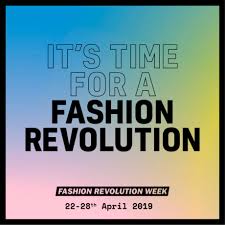Fashion Revolution: Creating Change

So, what needs to change? First, the cycle of fast fashion needs to end. Brands are making new collections and trends at break-neck speeds. Despite the rising costs of energy and raw materials, clothing is cheaper than ever before. This system isn’t working. The rising speed of the fashion industry has also led to more industrial disasters, less safe working conditions, and exploitative labor practices. The EPA estimates that the industry is churning out over 150 billion pieces of clothing every year, and in America alone we throw away of 15 million tons (yes tons) of clothing every year, 85% of which ends up incinerated or in a landfill. That’s about 80 lbs of clothing per person per year thrown away! This also comes at the expense of the environment, as the processes used to grow, dye, and launder our clothes end up polluting our rivers, land, oceans, and air. So that means this monumental waste of economic resources ends up damaging the environment in every aspect of its lifecycle!

These might seem like huge and complex problems on a global scale, and they are. But that doesn’t mean that we can’t have an impact and create changes in the industry. To quote Fashion Revolution,
“We need to break our addiction to the need for speed and volume. We need to realize the true cost of our cheap bargains. Ultimately, we need to buy less, buy better, and keep asking questions about the realities behind what we’re purchasing. We need to love the clothes we already own more and work harder to make them last.”

So now we know a bit more about the process, the economic, environmental, and human costs with each of these elements. We know what about the process is problematic, and we know how we can change it for the better. But are we actually taking the next steps? Are we moving towards a more ethical and sustainable fashion industry?






